Bury and Co KG BTHANDSET Bluetooth Handset and Cradle User Manual telephone
Bury GmbH & Co KG Bluetooth Handset and Cradle telephone
Contents
- 1. Annex to User Manual
- 2. user manual
user manual

GTC560 NAR MY11-5 DRAFT 12-1
Mobile telephone
Japan 560 final draft
21/2/2011
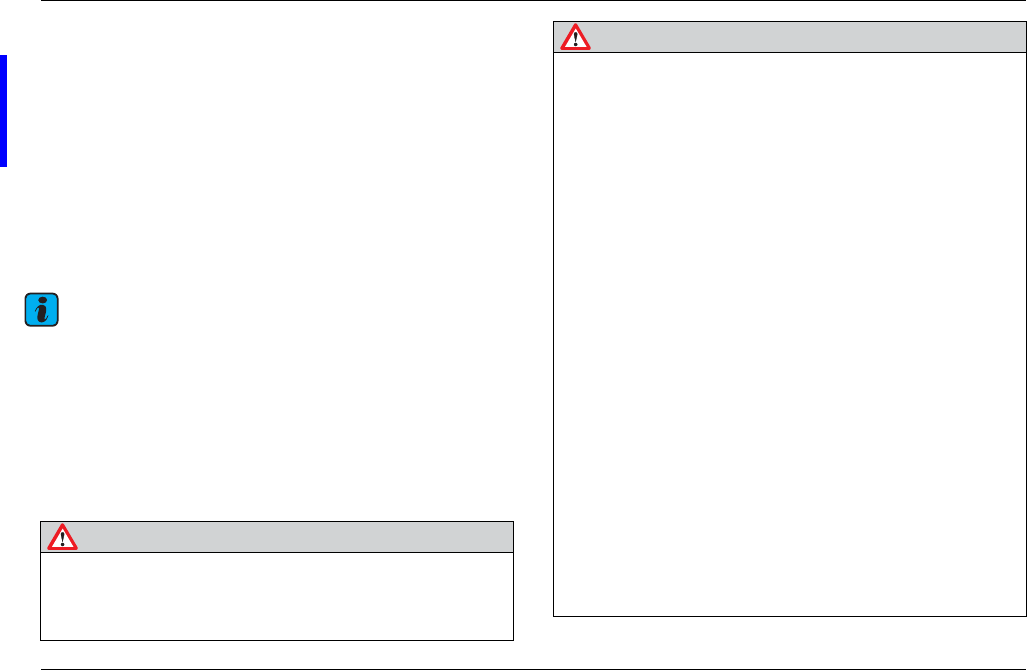
2GTC560 NAR MY11-5 DRAFT
Mobile telephone
Introduction
Bluetooth compatible mobile telephones can be connected to
the system using ‘hands-free profile’.
The mobile telephone system can be operated by using the
privacy handset (when fitted). For further information, refer to
‘Privacy handset’ on page 12-9.
Please note that this system is not supplied with a mobile
telephone, but is dependent upon a compatible telephone being
present. For information on the latest models of mobile
telephones supported, visit www.bentleymotors.com/ownership/
bluetooth_guide or contact your Authorised Bentley Retailer.
Note
The telephone system has been engineered to provide the best possible
service. However, you may have difficulty making a connection or call
under certain conditions. If problems are experienced, check that your
telephone service provider has adequate coverage in your location, or
try connecting away from sources of interference. (These sources may
include electronic equipment found in airports, hospitals or police
stations, or radio transmitters.)
TABLE HERE
WARNING
Drivers must acquaint themselves with and comply with the legal
requirements of the country in which the car is operating with
regard to the use of telephones etc., whilst driving.
W ARNING - FO O TERS NOT SET
Driver distraction causes accidents, collisions and serious
injury.
Use the telephone etc., only if road, traffic and weather
conditions permit, and you will not be distracted from your
driving.
Never let yourself be distracted by setting, adjusting or using
a mobile telephone or other communication system.
Always set volume levels so that you can clearly hear horns,
sirens and other warning sounds outside the vehicle.
When driving, glance at the screen only when necessary, and
only when traffic conditions permit this to be done safely.
If it becomes necessary to make any adjustments to a system
it is recommended that a passenger undertakes the task.
The driver must never make adjustments unless the car is
stationary.
In areas with no or inadequate mobile telephone network
service and occasionally in tunnels, garages and underpasses,
telephone calls (even emergency calls) may not be connected.
Mobile communication systems can cause interference to the
electronic systems of the car.
In order to safeguard operating reliability, mobile radio
equipment must not be operated inside the car unless it is fitted
with an exterior antenna.
WARNING (continued)
W ARNING - FO O TERS NOT SET
Japan 560 final draft
21/2/2011

Mobile telephone
GTC560 NAR MY11-5 DRAFT 3
Pairing with hands-free profile
A telephone must be ‘paired’ with the system before it can be
used. The pairing procedure needs to be followed only once for
each new telephone, and is designed to create a secure datalink
between the telephone and the car.
Once a telephone is paired with the car, it can be connected
to the car automatically in future. For further information, refer
to the heading ‘Automatic reconnection’ on page 12-5.
Only one telephone can be paired with the system at a time,
unless the car is fitted with a privacy handset, in which case up to
ten telephones can be paired.
It is recommended that the car is stationary and the ignition
is switched on before attempting to pair a mobile telephone.
To pair a telephone with the car, activate the Bluetooth
function on the mobile telephone and ensure that Bluetooth
visibility is set to ‘SHOW PHONE’ or ‘ON’. These settings may
vary between models of telephone, refer to your telephone
manufacturer’s instructions for details on how to perform this
operation.
Please ensure that contacts on the SIM card are stored to the
mobile telephone memory so that they can be accessed when
connected to the mobile telephone system.
Using a mobile telephone etc., inside the vehicle without
having an external antenna can be dangerous to your health and
that of your passengers, because of the electromagnetic radiation
energy that these devices emit which may be above established
recommended limits.
Never attach anything, including accessories (for example
coat hangers, cup holders or telephone support brackets) to the
air bag covers, or within the deployment area of the air bags.
Objects on or near the surfaces where air bags are located
can come loose and cause serious personal injury if the air bag
deploys. For further information, refer to the heading ‘Air bags’
on page 1-38.
For more information on the installation of any
communication equipment, consult the information under the
heading ‘Radio transmitters and business equipment’ on
page 12-14.
WARNING (continued)
W ARNING - FO O TERS NOT SET
Japan 560 final draft
21/2/2011

4GTC560 NAR MY11-5 DRAFT
Mobile telephone
Pairing using the privacy handset
With the ignition switched on, press the Menu button on the
privacy handset, and select the Bluetooth menu. Select Options,
followed by New search.
A list of available devices will be displayed. Using the navigation
button, select the required device and press Connect. A 4 digit
code will be displayed; enter this code into the mobile telephone.
Alternatively, with the ignition switched on, press the Menu
button on the privacy handset, and select the Bluetooth menu.
Select Options, followed by Find me.
On the mobile telephone to be connected, search for
Bluetooth devices. Select ‘Bentley’ from the list of found devices,
and enter the 4 digit code as displayed on the privacy handset.
Pairing without the privacy handset
With the ignition switched on, briefly press the telephone
button (see Fig. 12-34, item 2) on the steering wheel.
On the mobile telephone to be connected, search for
Bluetooth devices. Select ‘Bentley’ from the list of found devices,
and enter the 4 digit code ‘2222’ into the mobile telephone.
After pairing has been successfully completed, the entries
stored in the mobile telephone’s phonebook will be automatically
copied into the memory of the mobile telephone system.
This procedure can last for some minutes, dependent upon
the number of phonebook entries stored. The memory of the
mobile telephone system is limited to a maximum of 1000 entries.
Automatic phonebook download may not function with all
devices. If automatic download does not successfully complete, an
alternative, phone specific method for manual transfer of the
phonebook must be used. Please contact your local Authorised
Bentley Retailer for further information.
Each time a telephone is reconnected, the car will check the
phonebook stored on the mobile telephone and look for any
changes. It will then update the phonebook stored by the car, so
that the two match. This happens in the background, and may take
a few minutes.
Once a mobile telephone is successfully paired, connection to
the car will take place automatically when the ignition is switched
on.
If a telephone call is active, the mobile telephone will remain
connected until approximately 30 minutes after the ignition is
switched off (if the remote control key remains inside the vehicle),
or until the mobile telephone is taken out of range of the car.
If the mobile telephone is taken out of the car, and out of a
range of approximately 10 metres, the system will reconnect when
you re-enter the car and turn the ignition on.
When connected:
• The mobile telephone system will use the mobile
telephone’s antenna: calls will NOT be made using the car’s
external antenna.
• Text messages are not supported.
Japan 560 final draft
21/2/2011

Mobile telephone
GTC560 NAR MY11-5 DRAFT 5
• The ‘Number sending’ function cannot be used to suppress
the sending of your telephone number.
Automatic reconnection
If no privacy handset is fitted, the system will remember one paired
mobile telephone (increasing to ten paired mobile telephones
when the privacy handset is fitted), although it is only possible to
connect one mobile telephone at a time. The mobile telephone
that was last connected to the mobile telephone system will always
be the one to which automatic reconnection is attempted first.
To enable the mobile telephone system to reconnect
automatically to the mobile telephone, check that your mobile
telephone is turned on, has Bluetooth activated following the
manufacturer’s instructions, the ‘auto connection’ function on the
device is turned on, that ‘Bentley’ is a trusted device, and that it
is not connected to any other Bluetooth devices.
If automatic reconnection is not possible with a paired mobile
telephone, or if the mobile telephone system does not function
in the expected manner, remove the battery from the mobile
telephone (if possible) and re-insert it. Press the starter button
briefly once or insert the remote control key into the ignition
switch and turn the ignition on.
Note
During the connection/disconnection sequence to the car, any calls to
your telephone number will be dealt with by the settings on your mobile
telephone, for example, voicemail preferences, call divert, etc.
Replacing a paired device
To replace a paired device, ensure that the vehicle ignition is
switched off and turn off the Bluetooth function on the currently
paired mobile telephone. Alternatively, ensure that the currently
paired mobile telephone is outside of the operating range of the
mobile telephone system.
Turn on the ignition and press the telephone button on the
multi-function steering wheel to cancel the auto-reconnection
process and make the mobile telephone system visible.
Repeat the process described in ‘Pairing with hands-free
profile’ on page 12-3.
It is also possible to make the mobile telephone system visible
by turning off the Bluetooth function of the connected mobile
telephone whilst the mobile telephone system is active. It will then
be possible to pair a new mobile telephone to the system.
Deleting a paired mobile telephone
To delete a paired mobile telephone, enter the Bluetooth menu
in the privacy handset and use the navigation button to highlight
Japan 560 final draft
21/2/2011
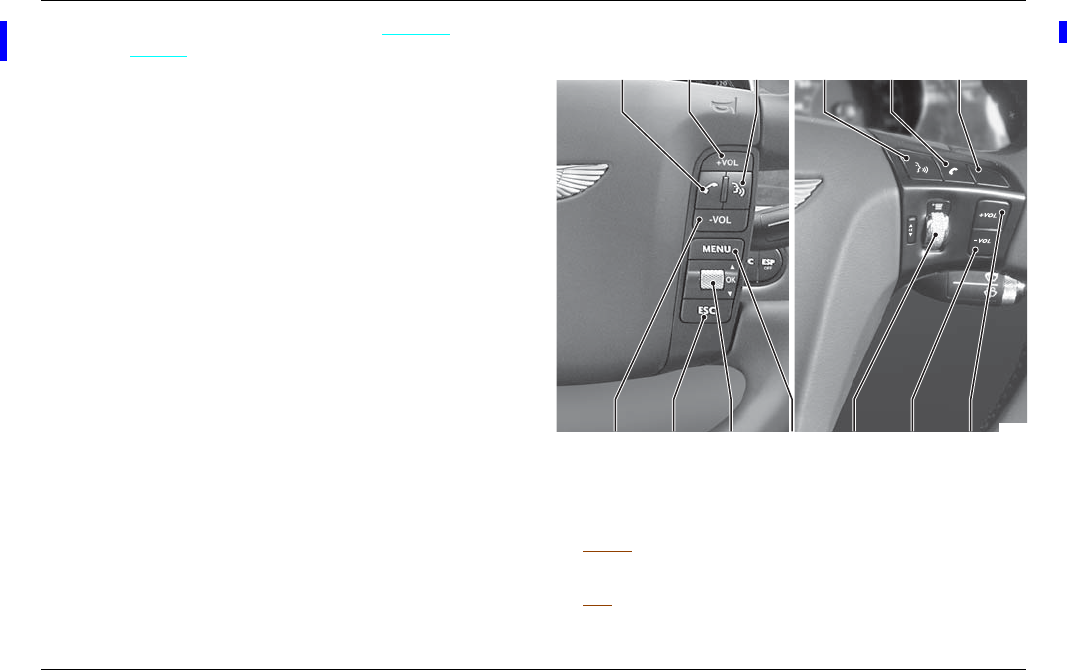
6GTC560 NAR MY11-5 DRAFT
Mobile telephone
the mobile telephone to delete. Press the Options button,
followed by Delete.
Multi-function steering wheel controls
GRAPHIC HERE
Fig. 12-34 Multi-function steering wheel controls
1 Telephone button
2 Volume increase
3 Talk button
4MENU button
5 Volume decrease
6 Thumbwheel
7ESC button (when fitted)
9504
5652764
123314
MENU
Japan 560 final draft
21/2/2011
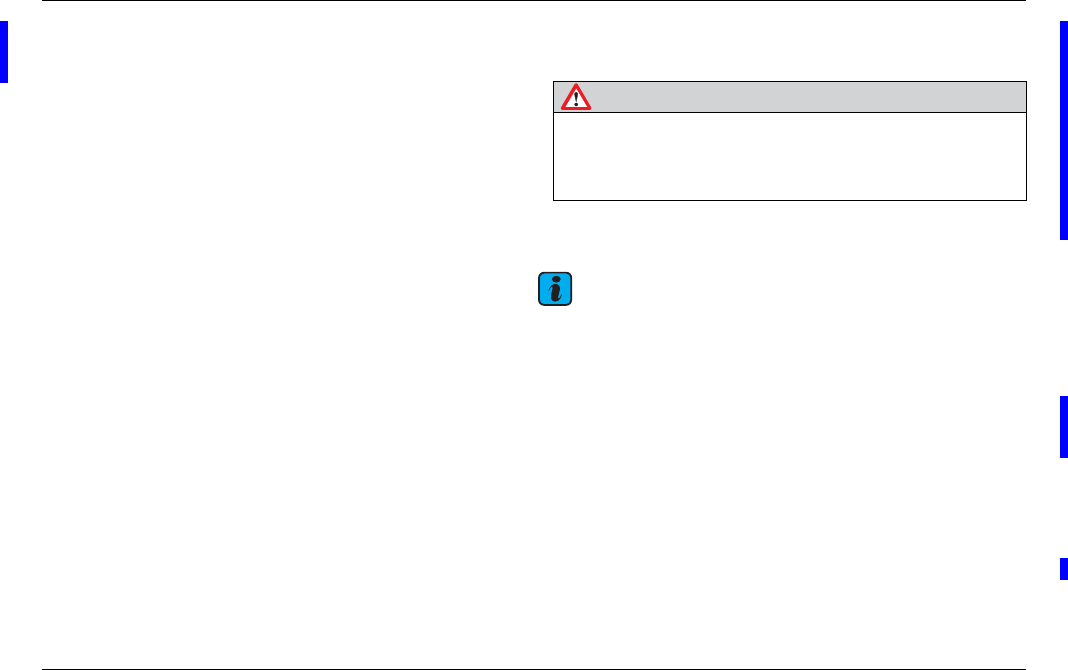
Mobile telephone
GTC560 NAR MY11-5 DRAFT 7
Certain functions of the mobile telephone system can be operated
via the multi-function steering wheel controls, provided that a
mobile telephone is paired with the system.
Making and receiving calls
TABLE HERE
It is possible to make a telephone call by using one of the
following methods:
Note
To make a telephone call, the ignition must be switched on.
Manual dialling
Telephone numbers can be entered and called directly using the
privacy handset (‘Privacy handset’ on page 12-9) or a connected
mobile telephone.
Dialling an entry from the Telephone book
Incoming telephone calls
WARNING
Use a mobile telephone only when it is safe and legal to do so.
Do not use a handheld mobile telephone whilst the car is in
motion.
W ARNING - FO O TERS NOT SET
Japan 560 final draft
21/2/2011

8GTC560 NAR MY11-5 DRAFT
Mobile telephone
Accepting an incoming telephone call
An incoming call can be accepted by using one of the following
methods:
• Briefly press the telephone button on the
multi-function steering wheel.
• Remove the privacy handset (when fitted)
from the cradle (refer to ‘Privacy handset’
on page 12-9), or if the privacy handset is already removed
from the cradle, press the green ‘call’ button on the privacy
handset.
Refusing an incoming telephone call
• Press the telephone button on the
multi-function steering wheel for
approximately 2 seconds.
Ending a current call
• Briefly press the telephone button on the
multi-function steering wheel.
Disconnecting a call
• Briefly press the telephone button on the
multi-function steering wheel.
When a telephone call has ended, the audio
system will revert to the previous mode.
If a call is ended by a third party, dependent upon your service
provider, the call may stay active for up to two minutes.
It is recommended that the telephone button on the
multi-function steering wheel is used at end of every call.
Transferring a telephone call to the mobile
telephone system.
If a telephone call is in progress outside of the vehicle, and the
mobile telephone has previously been paired to the mobile
telephone system, if the caller enters the vehicle, the mobile
telephone system will attempt to connect to the mobile telephone
when the ignition is switched on.
If the connection is successful, the call will be transferred to
the mobile telephone system, if the mobile telephone is authorised
to do so.
Japan 560 final draft
21/2/2011
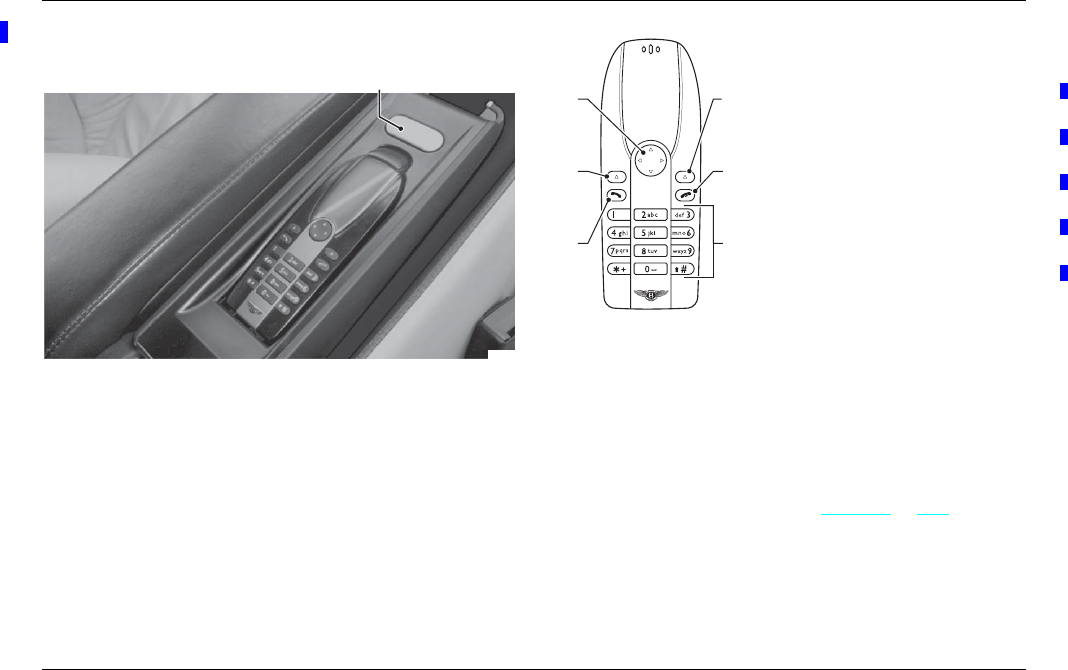
Mobile telephone
GTC560 NAR MY11-5 DRAFT 9
Privacy handset (when fitted)
G RAPH IC HERE
Fig. 12-35 Privacy handset and cradle
The privacy handset allows calls to be made discreetly, without
the conversation being broadcast through the car audio system.
Pressing the release button (see Fig. 12-35, item 1) will release
the privacy handset, so that it can be removed from the cradle.
Releasing the privacy handset in this manner will automatically
answer an incoming call and divert the conversation from the car
audio system to the handset. Replacing the handset during the call
will divert the conversation back to the car audio system.
TABLE HERE
Fig. 12-36 Privacy handset operation
The function of the left and right controls buttons varies,
depending on which menu is displayed on the privacy handset. The
name of the available function will be displayed above each of these
buttons, in the lower corners of the handset screen.
A conversation can be transferred between the privacy
handset and the car’s audio system in the middle of a call. To change
the audio routing mid-call, press the Handset or Car button on
the privacy handset.
The volume of the privacy handset can be adjusted by using
the left and right navigation buttons, (see Fig. 12-36, item 1).
9512
1
1 Navigation button. Up and Down
scrolls through menus, Left and
Right adjusts handset volume.
2 Right control button.
3 End call and on/off button.
4 Telephone keypad.
5 Call button.
6 Left control button.
9513
1
5
6
12
36
45
Japan 560 final draft
21/2/2011
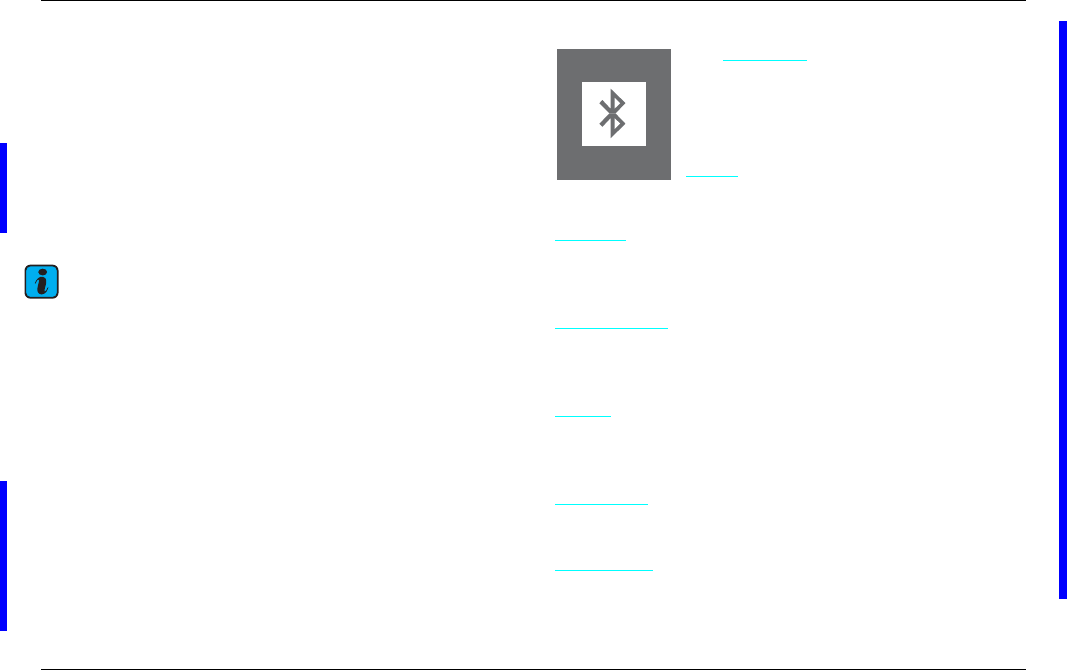
10 GTC560 NAR MY11-5 DRAFT
Mobile telephone
Up to two privacy handset cradles may be fitted: one in the
front armrest, and one in the rear seat armrest, although only one
privacy handset may be used.
If the handset is in position in the cradle, it will be turned off
when the Infotainment system is turned off.
If the privacy handset is left out of the cradle, the handset
display backlight will turn off automatically after approximately one
minute in order to prolong the battery life.
It is recommended that the handset is left in the cradle when
not in use, to maintain the battery charge.
Note
The privacy handset is designed specifically to fit into the privacy handset
cradle. The system uses Bluetooth technology for secure audio transfer
between the handset and the car, and will only have a limited range
when used outside the car. Do not attempt to fit a mobile telephone in
the privacy handset cradle.
Privacy handset menus
The various functions of the privacy handset can be accessed
through a number of different menus. Press the left hand control
button (see Fig. 12-36, item 6) on the privacy handset to open the
menu list. Scroll through the list of menus to the one that you
require and press the left hand control button (see Fig. 12-36,
item 6). Dependant upon the specification of the vehicle and the
current connection status, the menus are as follows:
Bluetooth
The Bluetooth menu displays the currently
connected telephone, as well as allowing
changes to be made to Bluetooth settings.
Dependant upon the connection method and
current mobile telephone status, pressing the
Select button will allow you to choose from
the following options:
Connect
Connects the selected mobile telephone to the mobile telephone
system.
Set as default
Enables a paired mobile telephone to be selected as the default
connection.
Delete
Deletes the selected paired mobile telephone from the mobile
telephone system.
Disconnect
Disconnects the currently connected mobile telephone.
New search
The telephone system will search for local Bluetooth devices.
堂堔堏埦基域埦埳
ᙇ㦄 堀堔埥埮
Japan 560 final draft
21/2/2011
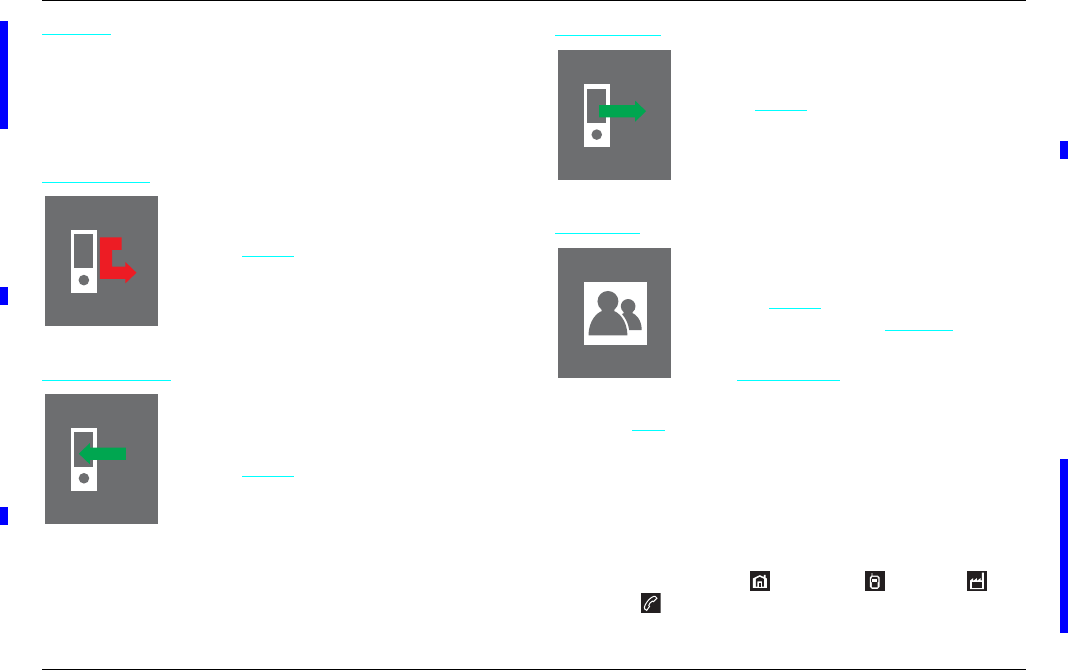
Mobile telephone
GTC560 NAR MY11-5 DRAFT 11
Find me
The mobile telephone system will be made visible, enabling a
Bluetooth enabled device to be connected. This feature is only
available when there is no mobile telephone connected via
Bluetooth.
Missed calls
A list of missed calls can be accessed through
the privacy handset.
Press the Select button then scroll through the
list of entries. Press the green ‘call’ button
(see Fig. 12-36, item 5) to make a call to the
selected number.
Received calls
A list of received calls (i.e. calls that have been
answered) can be displayed in the privacy
handset.
Press the Select button then scroll through the
list of entries. Press the green call button
(see Fig. 12-36, item 5) to make a call to the
selected number.
Last dialled
The list of the last ten calls dialled can be
accessed through the privacy handset.
Press the Select button then scroll through the
list of entries. Press the green call button
(see Fig. 12-36, item 5) to redial the selected
number.
Contacts
The Telephone book menu can be used to view
and modify the phonebook.
Press the Select button and scroll to the
required contact. Press the Options button to
display the following actions:
Select View details to view the details of a
particular contact.
Select Dial to call a particular contact.
Phonebook contacts with multiple numbers
If a Bluetooth telephone is connected it is possible to display either
the SIM card contacts or the telephone contacts. If SIM card
contacts are selected, only one number per name will be displayed.
If telephone contacts are selected, up to four categories of number
can be displayed: ‘home’ ( ), ‘mobile’ ( ), ‘office’ ( ) and
‘general’ ( ). The privacy handset will identify each type of
number with the appropriate icon.
؈ඓߒߚࡅ߮נߒ
ᙇ㦄 堀堔埥埮
࠹ॾ埰埦堏
ᙇ㦄 堀堔埥埮
່ึ埶堔埨埧堏
ᙇ㦄 堀堔埥埮
ຑെ
ᙇ㦄 堀堔埥埮
Japan 560 final draft
21/2/2011

12 GTC560 NAR MY11-5 DRAFT
Mobile telephone
Preferences
Select the Preferences menu to change system
settings. Press the Select button to choose
from the following options:
Audio routing
Telephone conversations can be heard through
either the privacy handset, or through the car’s
audio system. This menu changes the default setting for how
telephone conversations are heard; select from Handset or
Loudspeaker.
Ring tone
Select a ringtone using the navigation button (see Fig. 12-36,
item 1); the ringtone will be played through the car audio system.
Press the Select button to choose the required ringtone.
Holding a call
During a telephone call, press the Options button (see Fig. 12-36,
item 6) on the privacy handset and then select Hold. This will
place the call on hold.
To take the call off hold, press Options and then press
Unhold.
It is also possible to put the current conversation on hold, and
call another contact. Press the Options button and select
Contacts. Highlight the required contact and press Select: the
contact will be called, and the current conversation will be put
on hold.
Multiple call handling
The privacy handset can be used to alternate between telephone
calls if the call waiting feature on your mobile telephone is
activated. Refer to your network service provider for information
on how to activate this feature.
Once this feature is activated, notification of a call waiting will
be via an audible beeping which will be heard over the active
conversation. The name and number of the waiting call will be
displayed on the privacy handset.
The following options are available:
To reject the waiting call, press the Refuse button on the
privacy handset.
To accept the call, press the Accept button on the privacy
handset. This will transfer you from your current call to the waiting
call.
Hosting a conference call
Whilst connected to multiple calls, it is possible to swap between
callers, or host a conference call:
Press the Options button on the privacy handset.
Select Swap from the menu to swap from the current caller,
to the call waiting.
堎堂埝堐堓埳
ᙇ㦄 堀堔埥埮
Japan 560 final draft
21/2/2011
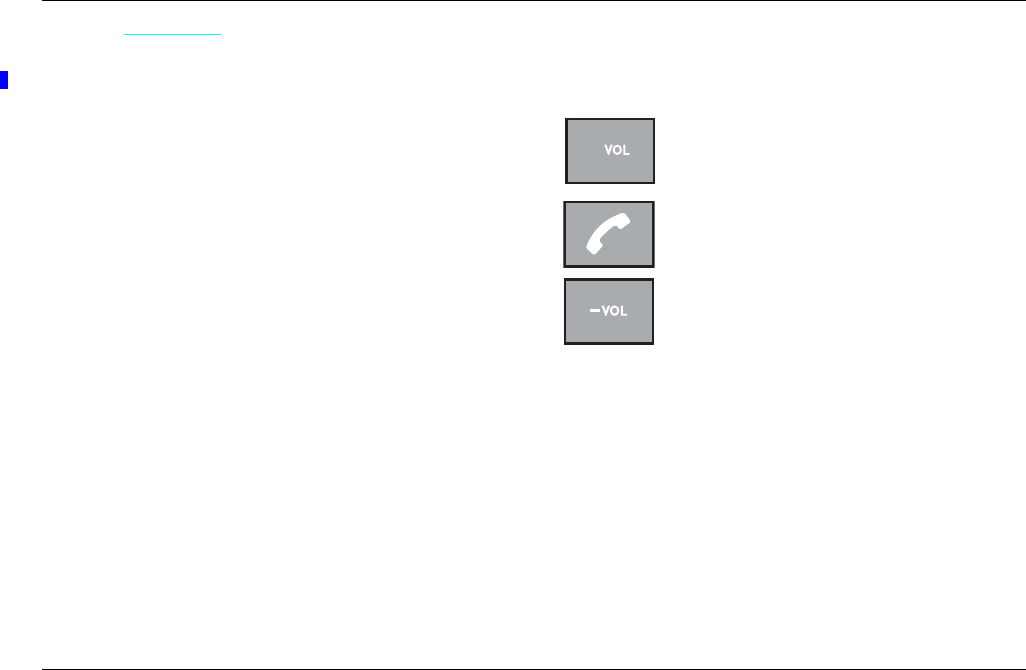
Mobile telephone
GTC560 NAR MY11-5 DRAFT 13
Select Conference to speak to all the callers who are
currently connected.
To end a call, press the ‘end call’ button (see Fig. 12-36, item 3)
on the privacy handset. If the system is hosting a conference call,
this will disconnect the most recent addition to the conference.
If you are only speaking to one of the callers, pressing ‘end call’
will only disconnect the current caller: you must disconnect each
call individually.
Privacy handset battery
To charge the privacy handset battery, place the handset into the
cradle. The battery strength will be displayed on the handset
screen to indicate that the battery is charging.
The long life battery in the privacy handset is not replaceable.
For a replacement privacy handset contact your local Authorised
Bentley Retailer.
Steering wheel controls
TABLE HERE
Control Operation
Press to increase volume.
Press once to Accept a telephone call.
Press for approximately 2 seconds to Reject
a telephone call.
Press to decrease volume.
+
Japan 560 final draft
21/2/2011

14 GTC560 NAR MY11-5 DRAFT
Mobile telephone
Adjusting call and ring tone volume
Press the relevant volume adjustment button to
either increase or decrease the call volume and the
volume of the ring tone to your individual
requirements.
The factory default volume is preset so that it matches that of
the satellite navigation system.
Radio transmitters and business equipment
Radio transmitters
Bentley cannot accept responsibility for the installation of
equipment it has not approved.
Any retrofit installations of radio transmitters in the car
require prior approval from Bentley.
Approval will be granted provided that:
The antenna is installed correctly, on the exterior of the car
and shielded cables are used, together with non-reflective antenna
trimming.
The effective transmitting power does not exceed 10 Watts
at the antenna base.
Your Authorised Bentley Retailer will be able to inform you
about options for installing and operating radio transmitters with
higher transmitting power.
Business equipment
Retrofit installation of business or private equipment in the car is
permitted, provided the equipment cannot interfere with the
driver’s immediate control of the car.
Any such equipment must carry the CE mark.
Any retrofit equipment that could influence the driver’s
control of the car must have a type approval for the car and must
carry the e mark.
+
Japan 560 final draft
21/2/2011

Mobile telephone
GTC560 NAR MY11-5 DRAFT 15
Note
Any retrofit installation of electrical or electronic equipment in the car
will affect the original car type approval. Under certain circumstances,
this could mean invalidation of the original type approval for the car.
Mobile radio transmitters
Commercial mobile telephones or radio equipment might
interfere with the electronics of the car and cause malfunctions if
no external antenna is fitted, or if the external antenna is installed
incorrectly and transmitting power above 10 Watts.
For this reason, you should always operate mobile telephones
with a properly installed external antenna. This also applies to
approved Bluetooth mobile phones, connected via the hands-free
profile (refer to ‘Pairing with hands-free profile’ on page 12-3).
For this reason, you should always operate mobile telephones
with a properly installed external antenna. This also applies to
approved Bluetooth mobile phones, connected via the hands-free
profile (refer to ‘Pairing with hands-free profile’ on page 12-3).
The external antenna directs the electromagnetic fields to the
exterior, which reduces the field strength in the vehicle interior.
If retro-fitting an external antenna, please ensure that it is
installed correctly. For up-to-date information about installing an
external antenna, please contact an Authorised Bentley Retailer.
Please note also that the maximum range of the equipment
can only be achieved with an external antenna.
The most common causes of faults are:
No external antenna.
Incorrectly installed external antenna.
Transmitting power in excess of 10 watts.
Always carefully follow the operating instructions for your
communication system.
Note
Improper installation of mobile telephones or other electronic
components can cause other vehicle systems to malfunction.
Japan 560 final draft
21/2/2011